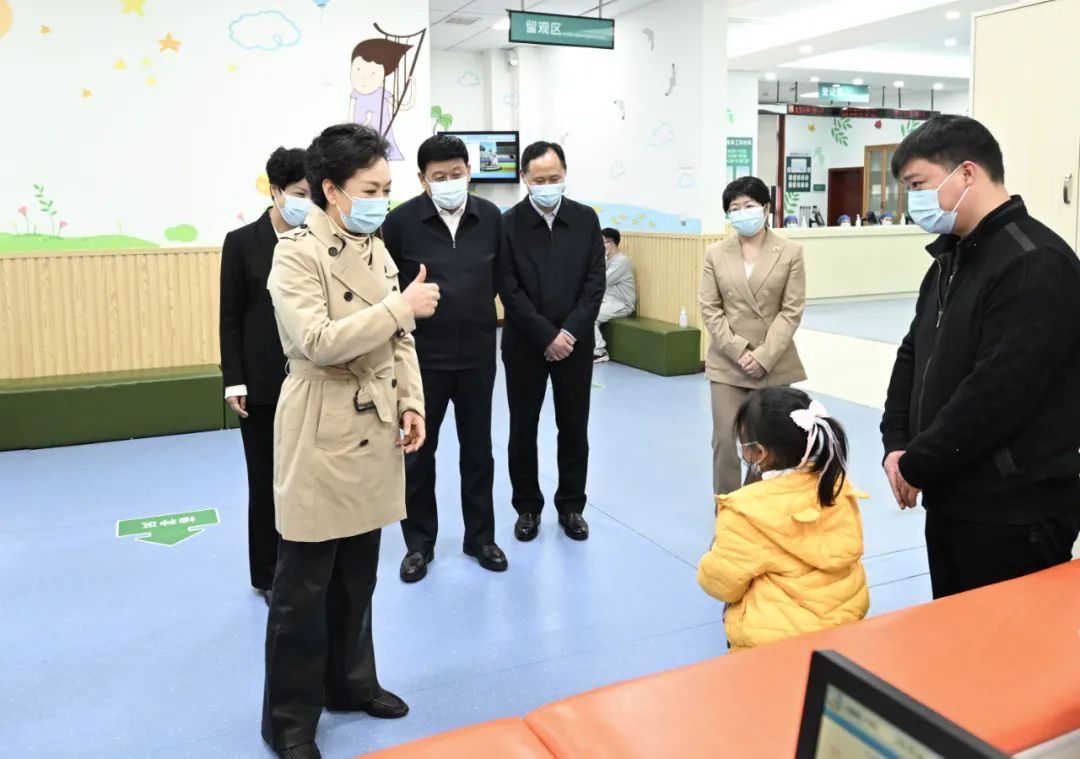Peng Liyuan, wife of Chinese President Xi Jinping and World Health Organization (WHO) goodwill ambassador for TB and HIV/AIDS, visits the Yuhua District Health Education Center in Changsha, the capital city of central China’s Hunan Province. /CMG
World Tuberculosis (TB) Day, which falls on March 24 every year, is designed to build public awareness that TB today remains a global public health problem that seriously endangers people’s health.
According to the World Health Organization’s (WHO) Global Tuberculosis Report 2023, in 2022, there were more than 10.6 million cases of active TB globally, with 1.3 million deaths.
Ahead of this year’s World TB Day, Peng Liyuan, wife of Chinese President Xi Jinping and WHO goodwill ambassador for TB and HIV/AIDS, paid a visit to a local community in Changsha, the capital city of central China’s Hunan Province, to research the country’s TB prevention and treatment work at the grassroots level.
She first visited the Yuhua District Health Education Center to learn about the institution’s efforts to strengthen health education on TB as well as build TB disease prevention and treatment mechanisms.
Peng called on everyone to work together as advocates and volunteers to better popularize knowledge on TB prevention and treatment among community residents and the young generation.
In addition, Peng also had a friendly meeting with medical personnel who serve the local community, from whom she learned about the management of TB diagnosis and treatment services at the grassroots level.
After chatting with recovered TB patients, children waiting for vaccination and their parents, Peng expressed the hope that all parties will continue to work hand in hand towards ending the spread of TB disease.

Peng Liyuan, wife of Chinese President Xi Jinping and World Health Organization (WHO) goodwill ambassador for TB and HIV/AIDS, visits a community health service center in Changsha, the capital city of central China’s Hunan Province. /CMG
China’s action
The Chinese government attaches great importance to TB prevention and treatment and has incorporated it into the Healthy China strategy.
Speaking to China Media Group, Zhao Yanlin, director of the Center for Tuberculosis Prevention and Control of the Chinese CDC, pointed out that over the past decade, China’s TB morbidity has declined by 25 percent, which is more than twice the global average decline rate.
According to Zhao, as of 2023, total national funding for TB prevention and control is nearly 20 times higher than in 2001.
China has been constantly improving the support capacity, carrying out multi-sector cooperation, engaging the participation of the whole society and actively promoting new diagnostic techniques, therapeutic solutions and management tools. As a result, the tuberculosis cure rate in the country stays above 90 percent.
The WHO and the United Nations (UN) both harbor great expectations for youth participation in the prevention of TB as well as for their engagement in promoting health care for all of humanity.
China also attaches great importance to the development of young volunteers and actively encourages public voluntary actions for TB prevention and control. Over the past 10 years, the number of volunteers in China has increased to over 1 million, more than half of whom are young people.



